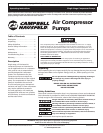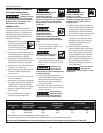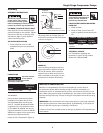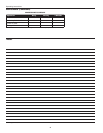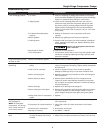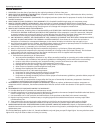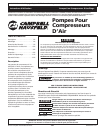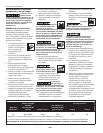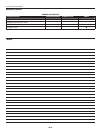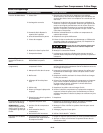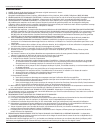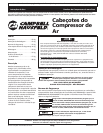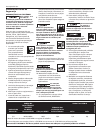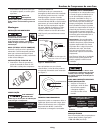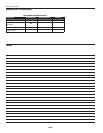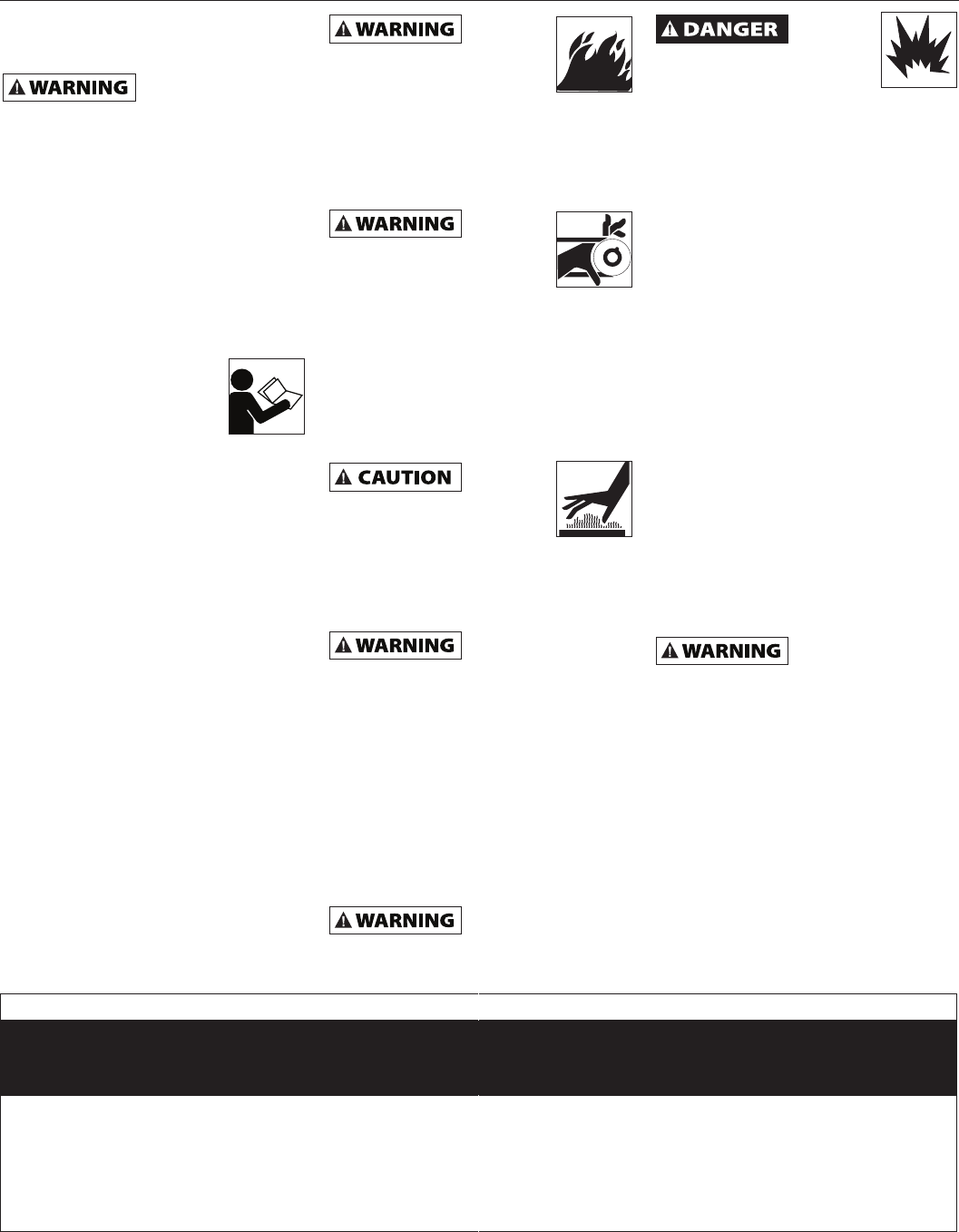
FOR VT2030 & VT2731 ONLY
Motor Running
HP*
Recommended
Campbell Hausfeld
Motor Part No. Pump RPM**
Outside Dia. of
A-Section Motor
Pulley*
Free Air CFM @
40 psig 90 psig
2.0 MC015502IP 700 2.00 8.0 6.4
3.0 MC015403IP 1050 3.00 11.4 9.0
* Note: Motor should be a 3450 RPM compressor duty motor.
** For pump speeds lower than 700 RPM use a 1750 RPM motor with the appropriate pulley.
Do not exceed 1140 RPM at 125 psig or damage may occur to the pump and the warranty will be void.
2
Operating Instructions
www.chpower.com
Never attempt to repair or
modify a tank! Welding,
drilling or any other
modification will weaken the tank
resulting in damage from rupture or
explosion. Always replace worn or
damaged tanks.
13. Tanks rust from moisture build-up,
which weakens the tank. Make sure
to drain tank regularly and inspect
periodically for unsafe conditions
such as rust formation and corrosion.
14. Fast moving air will stir up dust
and debris which may be harmful.
Release air slowly when draining
moisture or depressurizing the
compressor system.
15. Keep hoses away from sharp
objects, chemical spills, oil solvents
and wet floors which can damage
hose. Do not operate compressor
with damaged hose(s) or after the
compressor or attachments have
been dropped or damaged. Notify
the nearest authorized service
facility for examination, repair, or
other adjustment.
Never use plastic
(PVC) pipe for
compressed air. Serious injury or death
could result.
General Safety Information
CALIFORNIA PROPOSITION 65
This product or
its power cord may
contain chemicals known to the State
of California to cause cancer and birth
defects or other reproductive harm.
Wash hands after handling.
GENERAL SAFETY
Since the air compressor and other
components (pump, spray guns, filters,
lubricators, hoses, etc.) used make up
a high pressure pumping system, the
following safety precautions must be
observed at all times:
1. Read all manuals included
with this product carefully.
Be thoroughly familiar
with the controls and the
proper use of the equipment.
2. Follow all local safety codes and, in
the United States, the Occupational
Safety and Health Act (OSHA).
3. Only persons well acquainted with
these rules of safe operation should
be allowed to use the compressor.
4. Keep visitors away and NEVER allow
children in the work area.
5. Wear safety glasses and use hearing
protection when operating the
pump or unit.
6. Do not stand on or use the pump or
unit as a handhold.
7. Before each use, inspect compressed
air system, fuel system and electrical
components for signs of damage,
deterioration, weakness or leakage.
Repair or replace defective items
before using.
8. Check all fasteners at frequent
intervals for proper tightness.
Motors, electrical equipment
and controls can cause
electrical arcs that will
ignite a flammable gas or vapor. Never
operate or repair in or near a flammable
gas or vapor. Never store flammable
liquids or gases in the vicinity of the
compressor.
Never operate compressor
without a beltguard.
Compressors can start
automatically without warning.
Personal injury or property damage
could occur from contact with moving
parts.
9. Do not wear loose clothing or
jewelry that will get caught in the
moving parts of the unit.
Compressor parts may be hot
even if the unit is stopped.
10. Keep fingers away from
a running compressor; fast moving
and hot parts will cause injury and/
or burns.
Vibrations may
cause cracks in
tanks and result in bursting. Do not
install pump on a tank not designed for
use with that pump.
11. If the equipment should start to
vibrate abnormally, STOP the engine/
motor and check immediately for
the cause. Vibration is generally a
warning of trouble.
12. To reduce fire hazard, keep engine/
motor exterior free of oil, solvent, or
excessive grease.
Never remove or
attempt to adjust
safety valve. Keep safety valve free
from paint and other accumulations.



